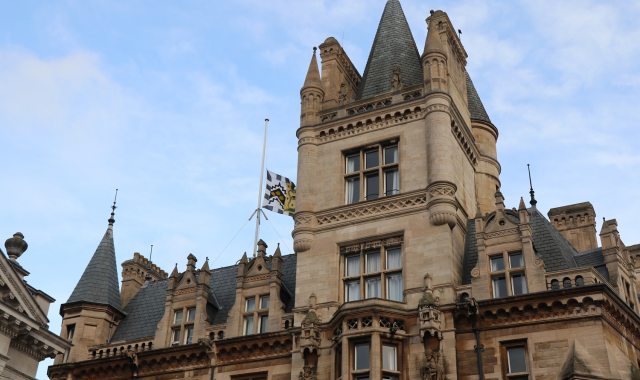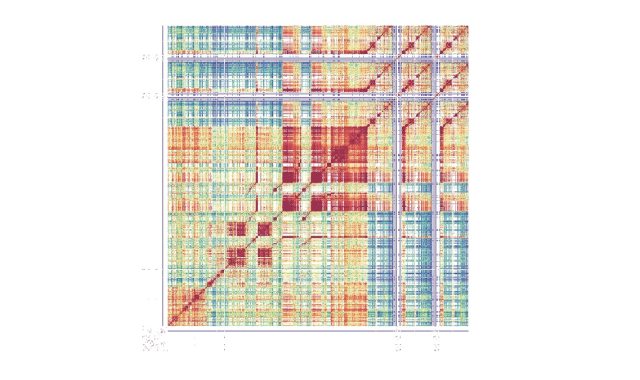Pandemic: Then and Now
- 02 April 2020
- 6 minutes
Gonville & Caius College, the Cambridge community, and the world are facing challenging times in 2020. In this troubling and uncertain new era of the Coronavirus pandemic, it is encouraging to remember that difficult times have been endured in Cambridge before. Again and again, Gonville & Caius College and Cambridge have persevered through pandemics and hardships, eventually entering into new periods of health and prosperity.
It can often be difficult to relate to historical times in our modern society but in 1901, Caius Fellow and inventor of the Venn Diagram, John Venn, wrote of previous pandemics and plagues that had taken hold of the College, providing an eerily similar play-by-play of events in the Cambridge community.
While the familiarity of the events detailed by Venn in his book Caius College is rather sobering, it is heartening to note that his description of college life during plague times is recorded in the chapter he entitled ‘College Prosperity’:
“No account of college life in early days would be complete without some reference to plague time. From the commencement of our personal records in the shape of the ‘Gesta’, or reports of the proceedings at college meetings, we find notices such as these:
‘November 7, 1593. – The plague raging in the town, it was ordered that the scholars and pensioners should be sent by their tutors into the country till January 13.’
‘December 27, 1593. – The plague still raging, the above order was extended to February 20.’
‘October 24, 1603. – The plague raging, leave of absence was granted to all on the foundation till January 12.’
‘November 6, 1605. – Plague again. Leave of absence till January 13.’
‘1625 – To the porter for his pains extraordinary in the fear of the Visitation, 40s.’
There was one of these visitations in 1630, and we happen to have on this and a somewhat later occasion unusually full information of the measures resorted to. To appreciate the terror which was felt, the reader must recall what has been said above as to the closeness to which the students were packed in college. Two, three, or four of them were living together in the same chamber, and there was no spare room anywhere for isolation. The town houses hemmed them in, and were in some places built close up to the College walls. No wonder that the College was treated like a besieged city.
Nearly all the tutors betook themselves into the country with their pupils, some to neighbouring villages, others into Norfolk and Suffolk. For instance, in the parish register of Coton, near Cambridge, there is an entry in 1630 that Matthew Stokes, Fellow of the College, gave some Communion ornaments, ‘in gratitude for his escape, when he retired there in the plague of pestilence.’
The University was thus almost entirely deserted, so that as one of our annalists (Gostlin) says,
‘nec Academiam in Academia, nec Cantibrigiam in Cantabrigia videre licuit aut invenire.’
All Acts, University and College, were suspended, and leave of absence granted to everyone without loss of stipend or other privileges. For the few whom duty or poverty forced to remain, special regulations were made.
‘That yf it please God that any in the college should be visited with the pest, that convenient nurses, physicke, and advice be provided for them… that the cook and his family be received into the college, to provide commons for those few which should be venture to stay; and that Miles, and a scholar, be in the Butteryes. That all the Bedmakers, except two, by immediately turned out of the college, and be allowed two shillings apeice every weeke. That a man be hired for 5s. a week for attending constantly at the Gate, to goe of errands into the town.’
The gates were ordered to be locked day and night, and no one to leave the College except for the most urgent reasons, and for the shortest possible time. At last, on November 29, 1630, there is an entry in the ‘Annals’:
‘God, in His blessings, looked down on the miseries of Cambridge, so that, the plague extinguished and health restored, the students flock back from every quarter and resume their intermitted studies.’
Generally these stringent precautions were effective, but sometimes, as in 1636, - which was again, like 1666, a bad year in Cambridge, - the disease broke in, and naturally under the circumstances several fell victims. In that year one Fellow died of it, as well as three students.”
-Excerpt taken from ‘Caius College’ by John Venn, Sc.D., F.R.S., F.S.A. Fellow of the College. First Published 1901. Pp. 115-117.
Gonville & Caius College and the Cambridge community of plague times took action. Despite enduring physical and financial hardships, their strength in unity and self-sacrifice for the sake of the greater good were displayed by the way those who were vulnerable were provided for: tutors looked after their pupils, those who could stayed home, and the College did its best to ensure the well-being and livelihood of its own ‘essential workers’.
At first it may feel odd to compare what is happening now in 2020 with the literal plague of medieval times: the Black Death! The Great Pestilence! Might that be a little dramatic? Even comparisons of Coronavirus to the 1918 Spanish Flu pandemic seem rather exaggerated and remote. The Plague and Spanish Flu were pandemics that occurred in the past!
We certainly know more about health and pandemics in 2020 than what they possibly could have known back in plague times, yet it is interesting that we have employed some similar strategies of combating pandemics, such as self-isolation, quarantine, and wearing personal protective gear (picture the plague doctors wearing their long-beaked masks vs. the facemasks our first responders wear today). This time around though, our strategies are scientifically-proven and evidence-based, not rooted in fear or assumptions.
Now that we are a few weeks into self-isolation and quarantine, perhaps the pandemic comparisons are not so outlandish after all. In fact, historical pandemics may actually be a most appropriate parallel to today’s societal resilience in the face of adversity and our universal determination to carry on. It turns out that the comparison of pandemics carries with it a message of hope: in spite of the unknown, Gonville & Caius College, the Cambridge community, and indeed the world, have persevered during pandemics before and have got through to the other side, eventually returning to a new normal. So too will we; in spite of this present pandemic, we will persevere into our own new era of prosperity, just as we always have.
This piece was written by Rachel Perry Eichhorst, the Archivist Trainee at Gonville & Caius College.
Image: Gonville & Caius College, Cambridge, View By Loggan (c. 1668)


